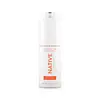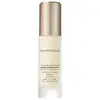What's inside
What's inside
 Key Ingredients
Key Ingredients

 Benefits
Benefits

 Concerns
Concerns

 Ingredients Side-by-side
Ingredients Side-by-side

Water
Skin ConditioningPropanediol
SolventNiacinamide
SmoothingAscorbyl Glucoside
AntioxidantGlycerin
HumectantIsodecyl Neopentanoate
EmollientSqualane
EmollientTrehalose
HumectantPeucedanum Japonicum Leaf/Stem Extract
HumectantEschscholzia Californica Leaf Cell Extract
Skin ProtectingSaccharomyces Ferment Lysate Filtrate
Skin ConditioningCitrus Unshiu Extract
Skin ConditioningPalmitoyl Tetrapeptide-7
Skin ConditioningPalmitoyl Tripeptide-1
Skin ConditioningZingiber Aromaticus Extract
Skin ConditioningButylene Glycol
HumectantDimethicone
EmollientPotassium Hydroxide
BufferingIsostearic Acid
CleansingCarbomer
Emulsion StabilisingAlcohol
AntimicrobialEthylhexylglycerin
Skin ConditioningLauryl Betaine
CleansingBehenyl Alcohol
EmollientStearamidopropyl Dimethylamine
EmulsifyingXanthan Gum
EmulsifyingSodium Citrate
BufferingBeheneth-20
EmulsifyingAcrylates/C10-30 Alkyl Acrylate Crosspolymer
Emulsion StabilisingTocopherol
AntioxidantBatyl Alcohol
EmollientDisodium EDTA
Sodium Metaphosphate
BufferingCitric Acid
BufferingPolysorbate 20
EmulsifyingSodium Metabisulfite
AntioxidantParfum
MaskingLimonene
PerfumingLinalool
PerfumingGeraniol
PerfumingSodium Lactate
BufferingSodium Benzoate
MaskingPhenoxyethanol
PreservativeIron Oxides
Water, Propanediol, Niacinamide, Ascorbyl Glucoside, Glycerin, Isodecyl Neopentanoate, Squalane, Trehalose, Peucedanum Japonicum Leaf/Stem Extract, Eschscholzia Californica Leaf Cell Extract, Saccharomyces Ferment Lysate Filtrate, Citrus Unshiu Extract, Palmitoyl Tetrapeptide-7, Palmitoyl Tripeptide-1, Zingiber Aromaticus Extract, Butylene Glycol, Dimethicone, Potassium Hydroxide, Isostearic Acid, Carbomer, Alcohol, Ethylhexylglycerin, Lauryl Betaine, Behenyl Alcohol, Stearamidopropyl Dimethylamine, Xanthan Gum, Sodium Citrate, Beheneth-20, Acrylates/C10-30 Alkyl Acrylate Crosspolymer, Tocopherol, Batyl Alcohol, Disodium EDTA, Sodium Metaphosphate, Citric Acid, Polysorbate 20, Sodium Metabisulfite, Parfum, Limonene, Linalool, Geraniol, Sodium Lactate, Sodium Benzoate, Phenoxyethanol, Iron Oxides
 Reviews
Reviews

Ingredients Explained
These ingredients are found in both products.
Ingredients higher up in an ingredient list are typically present in a larger amount.
Glycerin is already naturally found in your skin. It helps moisturize and protect your skin.
A study from 2016 found glycerin to be more effective as a humectant than AHAs and hyaluronic acid.
As a humectant, it helps the skin stay hydrated by pulling moisture to your skin. The low molecular weight of glycerin allows it to pull moisture into the deeper layers of your skin.
Hydrated skin improves your skin barrier; Your skin barrier helps protect against irritants and bacteria.
Glycerin has also been found to have antimicrobial and antiviral properties. Due to these properties, glycerin is often used in wound and burn treatments.
In cosmetics, glycerin is usually derived from plants such as soybean or palm. However, it can also be sourced from animals, such as tallow or animal fat.
This ingredient is organic, colorless, odorless, and non-toxic.
Glycerin is the name for this ingredient in American English. British English uses Glycerol/Glycerine.
Learn more about GlycerinNiacinamide is a multitasking form of vitamin B3 that strengthens the skin barrier, reduces pores and dark spots, regulates oil, and improves signs of aging.
And the best part? It's gentle and well-tolerated by most skin types, including sensitive and reactive skin.
You might have heard of "niacin flush", or the reddening of skin that causes itchiness. Niacinamide has not been found to cause this.
In very rare cases, some individuals may not be able to tolerate niacinamide at all or experience an allergic reaction to it.
If you are experiencing flaking, irritation, and dryness with this ingredient, be sure to double check all your products as this ingredient can be found in all categories of skincare.
When incorporating niacinamide into your routine, look out for concentration amounts. Typically, 5% niacinamide provides benefits such as fading dark spots. However, if you have sensitive skin, it is better to begin with a smaller concentration.
When you apply niacinamide to your skin, your body converts it into nicotinamide adenine dinucleotide (NAD). NAD is an essential coenzyme that is already found in your cells as "fuel" and powers countless biological processes.
In your skin, NAD helps repair cell damage, produce new healthy cells, support collagen production, strengthen the skin barrier, and fight environmental stressors (like UV and pollution).
Our natural NAD levels start to decline with age, leading to slower skin repair, visible aging, and a weaker skin barrier. By providing your skin niacinamide, you're recharging your skin's NAD levels. This leads to stronger, healthier, and younger looking skin.
Another name for vitamin B3 is nicotinamide. This vitamin is water-soluble and our bodies don't store it. We obtain Vitamin B3 from either food or skincare. Meat, fish, wheat, yeast, and leafy greens contain vitamin B3.
The type of niacinamide used in skincare is synthetically created.
Learn more about NiacinamideWater. It's the most common cosmetic ingredient of all. You'll usually see it at the top of ingredient lists, meaning that it makes up the largest part of the product.
So why is it so popular? Water most often acts as a solvent - this means that it helps dissolve other ingredients into the formulation.
You'll also recognize water as that liquid we all need to stay alive. If you see this, drink a glass of water. Stay hydrated!
Learn more about WaterXanthan gum is used as a stabilizer and thickener within cosmetic products. It helps give products a sticky, thick feeling - preventing them from being too runny.
On the technical side of things, xanthan gum is a polysaccharide - a combination consisting of multiple sugar molecules bonded together.
Xanthan gum is a pretty common and great ingredient. It is a natural, non-toxic, non-irritating ingredient that is also commonly used in food products.
Learn more about Xanthan Gum